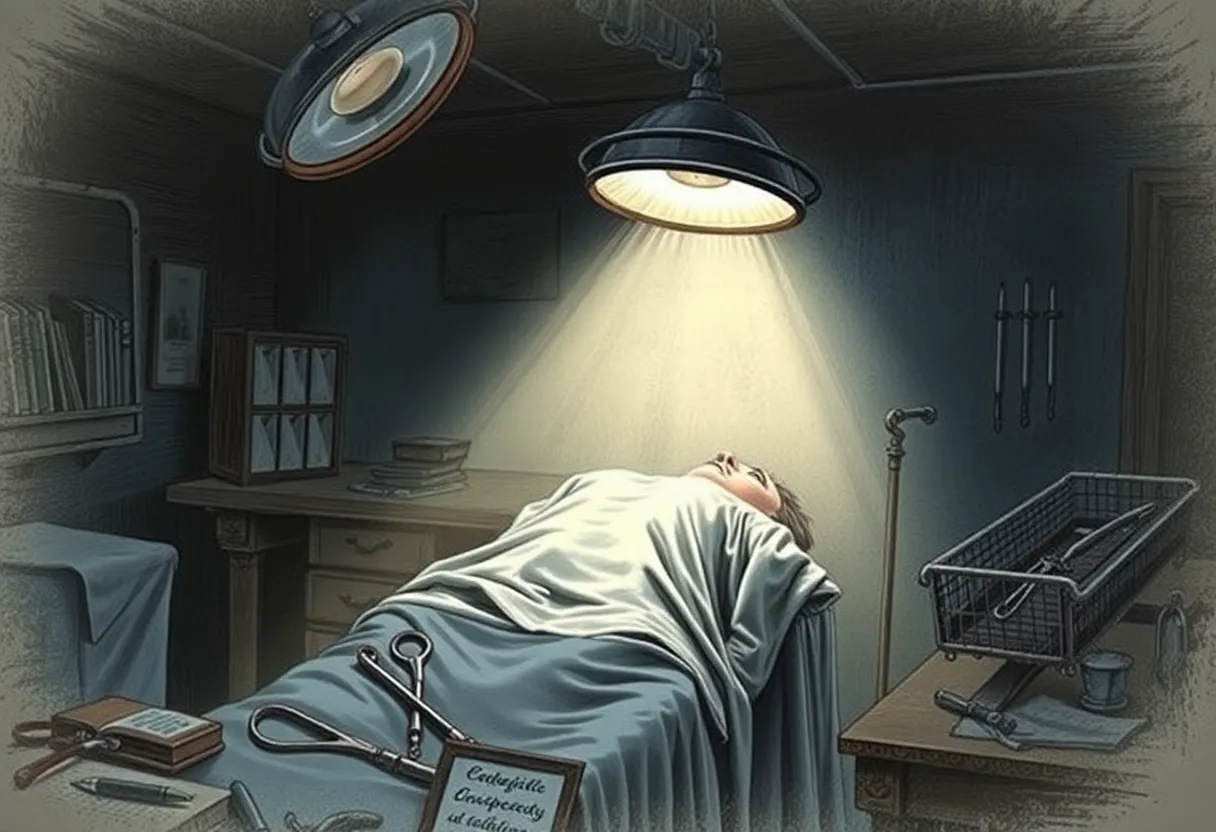News Summary
Frances Burney endured a painful mastectomy in 1811, highlighting the brutal realities of pre-anesthesia surgical practices. Her account provides insight into early medical challenges. Despite the excruciating pain of the procedure, Burney survived and lived for nearly three more decades, illustrating her remarkable resilience and the evolution of surgical techniques.
London, 1811: Frances Burney Undergoes Pioneering Mastectomy Without Anesthesia
In 1811, the city of London witnessed a remarkable and harrowing milestone in medical history when English novelist Frances Burney endured a breast cancer operation without the benefit of anesthesia. Her experience highlights the brutal reality faced by patients before the advent of modern pain relief techniques, marking a significant moment in surgical evolution.
The Diagnosis and Medical Context
At the age of 59, Frances Burney was diagnosed with breast cancer. Physicians in her time identified surgery as the only viable treatment to prolong her life, specifically recommending a mastectomy. However, the procedure’s unbearable pain without anesthesia posed a profound challenge, as the concept of surgical anesthesia had not yet been developed.
The Surgical Procedure and Burney’s Experience
On the day of her operation, Burney was blindfolded and restrained by multiple assistants to prevent her from moving during the procedure. Despite these precautions, she experienced extreme agony as the surgeon performed the incision. Her account of the event describes intense pain, which led her to lose consciousness twice amidst the suffering.
Despite the trauma, the operation was ultimately successful. Burney survived the ordeal and lived for another 29 years, demonstrating her resilience and determination to survive despite the primitive surgical conditions of her time.
Historical Significance of Pain Management in Surgery
Burney’s experience is a stark reminder of how invasive and painful early surgical procedures were before the innovations in pain management. Prior to the mid-19th century, surgeries were conducted without effective pain relief options, and operative interventions were rare, generally reserved for life-threatening conditions.
Ancient and Early Modern Pain Relief Techniques
While modern anesthesia was still decades away, ancient civilizations employed various methods to dull pain. The Persian physician Ibn Sina documented herbal alternatives such as the soporific sponge, which was soaked with herbal extracts to induce sleep and pain reduction. Ancient Peru practiced trepanation, drilling holes into the skulls of injured individuals to relieve pressure and treat head injuries, often with minimal pain relief.
The 19th Century and Rapid Surgical Techniques
During the early 1800s, surgeons performed amputations and other procedures with extreme speed to minimize patient suffering, sometimes completing surgeries in as little as 25 seconds. Notable surgeons such as Robert Liston became renowned for their rapid techniques, though these methods carried risks, including accidental injury or infection, as notably exemplified by an incident where Liston inadvertently cut off an assistant’s fingers during a procedure.
The Dawn of Anesthesia
Change arrived on October 16, 1846, when American doctors first used ether as an anesthetic—a breakthrough that would revolutionize surgery. Prior to ether’s introduction, hypnosis, known as mesmerism, was attempted as an alternative pain mitigation, but these efforts proved insufficient to replace chemical anesthesia.
The Broader Impact on Medical Practice
The introduction of anesthesia fundamentally altered the practice of surgery, allowing more complex and less rushed procedures. It helped shift perceptions of surgical medicine from brutal, last-resort interventions to more controlled and humane treatments. This transformation played a crucial role in reducing the trauma and mortality associated with surgical procedures and laid the groundwork for modern surgical and antiseptic techniques.
Conclusion
Frances Burney’s experience in 1811 underscores the profound challenges faced by early surgeons and their patients in managing pain. Her survival without anesthesia highlights the resilience required before the development of effective pain relief and anesthesia techniques. Her ordeal remains a significant chapter in the history of medicine, marking humanity’s arduous journey toward pain-free surgery and advanced surgical care.
Deeper Dive: News & Info About This Topic
HERE Resources
Additional Resources
- Baptist Press: Scopes Trial – A Defining Moment in U.S. History
- Wikipedia: Medical History
- KTVU: Video Report
- Google Search: Medical Advancements
- Billy Penn: Young People’s Continental Congress Philly 2025
- Google Scholar: Anesthesia History
- Vox: Disney’s America – A U.S. History Theme Park that Failed
- Encyclopedia Britannica: Anesthesia
- Washington Post: Largest U.S. Health Care Fraud Bust
- Google News: History of Surgery
Author: STAFF HERE WASHINGTON DC
The WASHINGTON DC STAFF WRITER represents the experienced team at HEREWashingtonDC.com, your go-to source for actionable local news and information in Washington, DC, and beyond. Specializing in "news you can use," we cover essential topics like product reviews for personal and business needs, local business directories, politics, real estate trends, neighborhood insights, and regional news affecting the area—with deep expertise drawn from years of dedicated reporting and strong community input, including local press releases and business updates. We deliver top reporting on high-value events such as the National Cherry Blossom Festival, Kennedy Center Honors, and the Washington Auto Show. Our coverage extends to key organizations like the Greater Washington Board of Trade and Destination DC, plus leading businesses in government contracting and technology that power the local economy such as Lockheed Martin and Amazon. As part of the broader HERE network, we provide comprehensive, credible insights into the dynamic landscape of the Washington metropolitan area.





